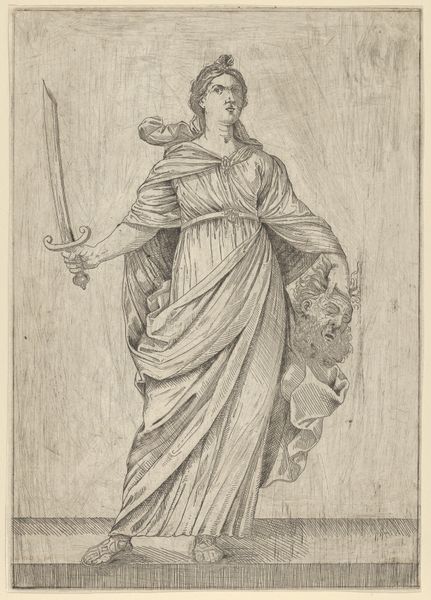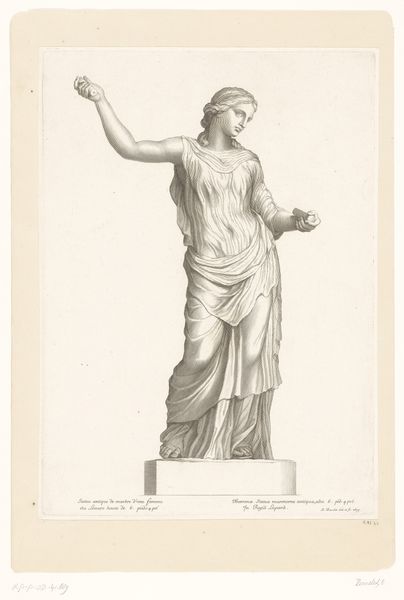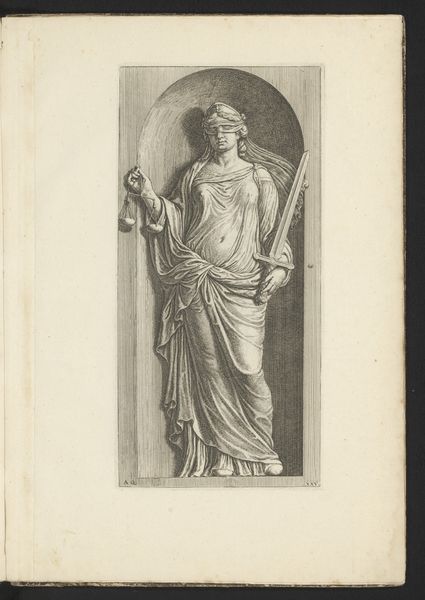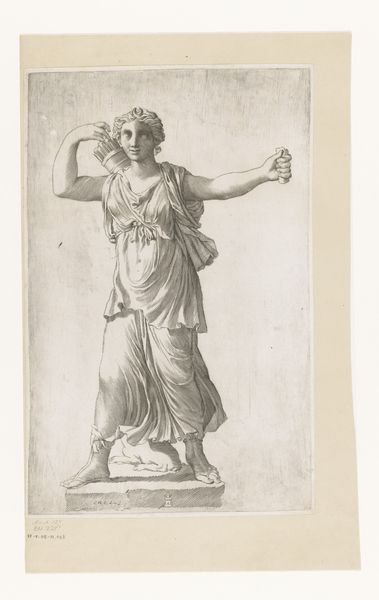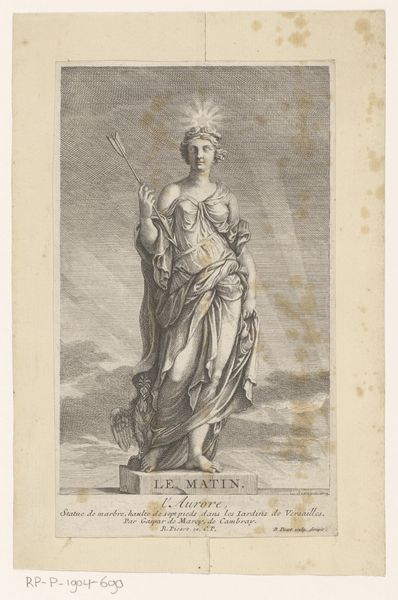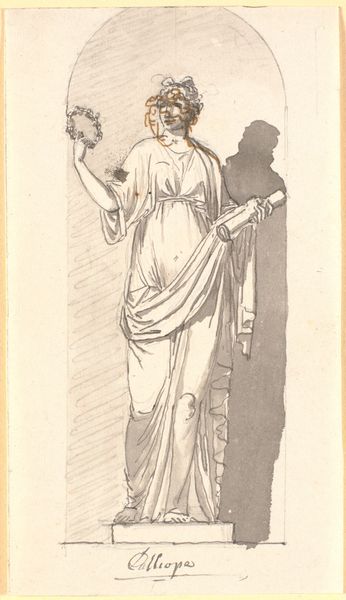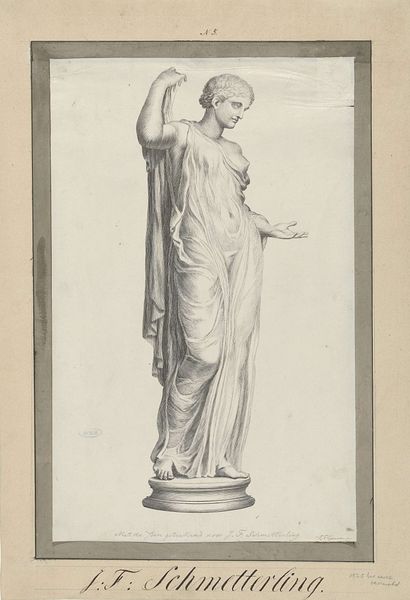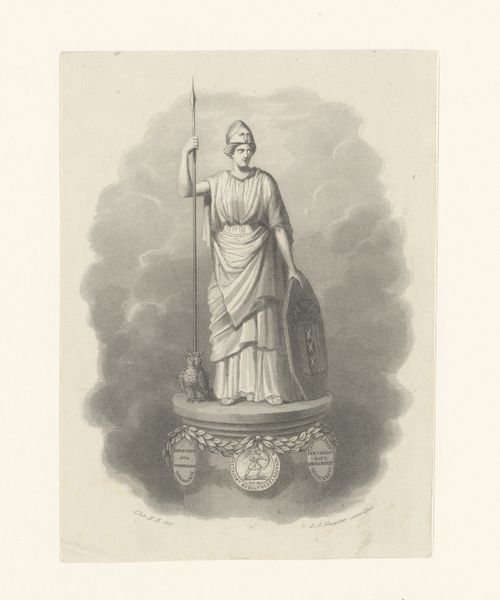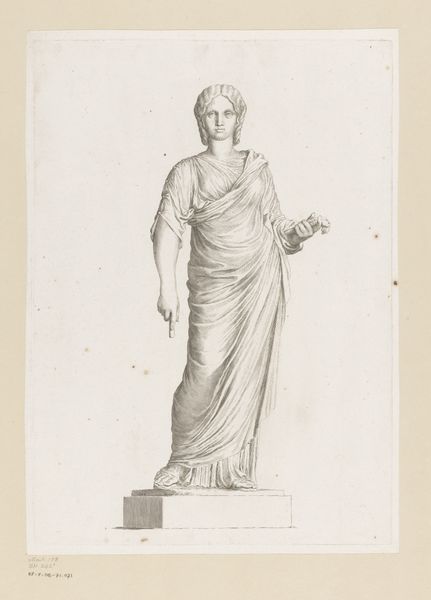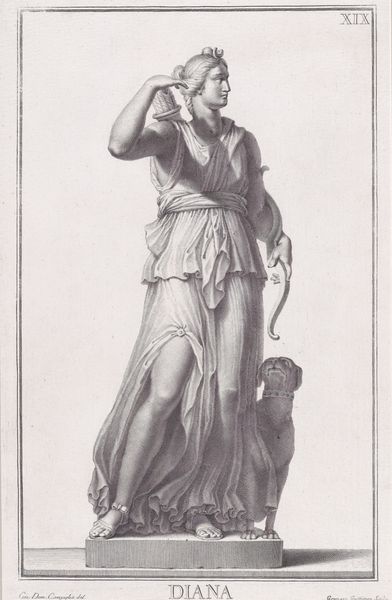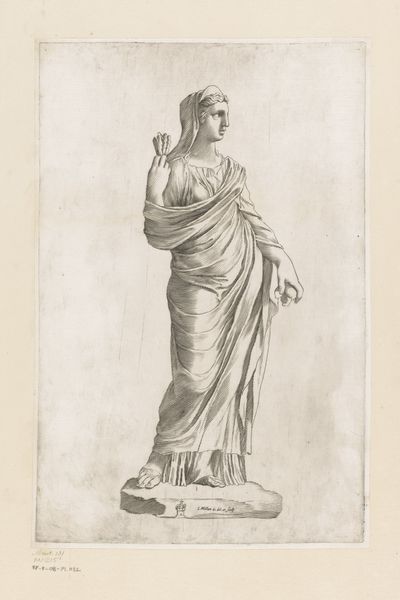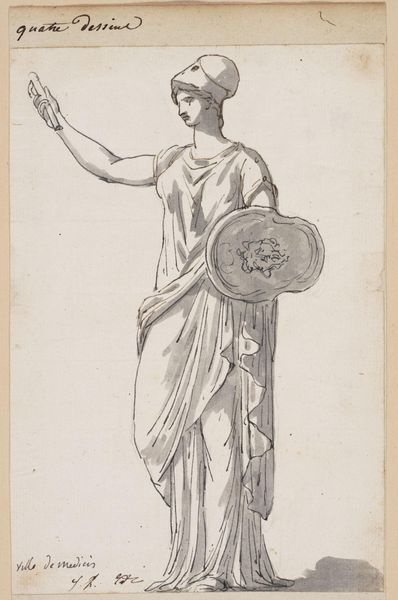
Opgeplakte variant op ontwerptekening voor een kamerwand; Oeconomia 1760 - 1819
0:00
0:00
drawing, watercolor, ink, pen
#
portrait
#
drawing
#
neoclacissism
#
allegory
#
figuration
#
watercolor
#
ink
#
line
#
pen
#
cityscape
#
academic-art
Dimensions: height 292 mm, width 155 mm, height 209 mm, width 100 mm
Copyright: Rijks Museum: Open Domain
Curator: This drawing, titled "Opgeplakte variant op ontwerptekening voor een kamerwand; Oeconomia," was conceived by Jurriaan Andriessen sometime between 1760 and 1819. It’s currently held in the collection of the Rijksmuseum. Editor: It has such an interesting stillness to it, like a paused scene from a stage play. The monochrome washes lend it a somber yet classical feel. The subject dominates the plane of the drawing with the minimal architectural elements serving only as subtle reminders of spatial context. Curator: Indeed. Andriessen employed pen, ink, and watercolor to create this layered effect. Note the clean, precise lines defining the allegorical figure of Oeconomia – the personification of economy or household management. She is encased within what seems to be an architectural alcove with an arch at the top. The composition itself presents a compelling case study in Neoclassical ideals. Editor: I'm drawn to the details of her attributes – the scales signifying justice and the tools, maybe symbolizing labor? These elements seem purposefully arranged to tell a specific socio-political story reflective of that historical moment. The inclusion of what looks to be an excerpted paragraph with gothic type seems integral to that story. Curator: Precisely. In its historical context, it’s imperative that we consider how Andriessen and his contemporaries used these allegorical representations to encode specific messages about governance, domestic virtue, and civic responsibility, and it’s important to recall the increasing cultural relevance of these themes during that tumultuous era. Editor: Agreed. The drawing functions almost as propaganda. The figure of Oeconomia almost suggests a moral imperative on behalf of the government or the upper classes, urging a commitment to sound fiscal practices. The architecture seems intended to make the allegory all the more respectable and trustworthy, imbuing Oeconomia herself with a classic, almost Greco-Roman stoicism. Curator: Examining the visual elements gives a privileged access into understanding the artist’s aesthetic strategies, particularly concerning how lines and washes coalesce to articulate complex theoretical constructs in an early Neoclassical language. Editor: And viewing the drawing from the perspective of cultural history reminds us that even seemingly neutral aesthetic choices reflect and reinforce specific social hierarchies and power dynamics that shape our perceptions. Curator: It truly underlines the importance of examining both the micro and macro in art interpretation. Editor: Indeed, a fascinating work inviting a richer exploration of both art and society of the 18th century.
Comments
No comments
Be the first to comment and join the conversation on the ultimate creative platform.
